Affiliate links on Android Authority may earn us a commission. Learn more.
Samsung in numbers, 2014
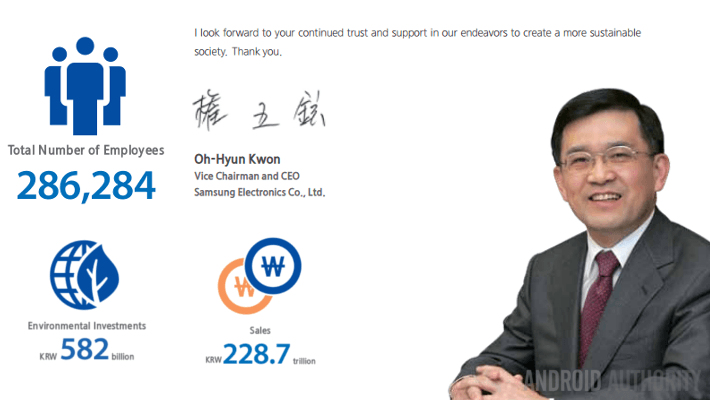
It’s that time of year when Samsung lets us in on what they’ve been up to, releasing their Samsung Sustainability Report 2014.
The report is based primarily off of what they’ve accomplished in 2013, but it is chock full of some great information and insights into the behemoth that Samsung has become. The report encompases all of the goodies a stakeholder would be interested in, including the company’s growth, people and projects.
The document, which I’ll link to at the end of the article, is over 130 pages long and has a great assortment of graphics and imagery to help the reading go a little easier. Lucky for you, we’ve done all the reading, and have compiled a list of the good stuff just for you.
Without further adieu, I give you Samsung in numbers.
Business Performance
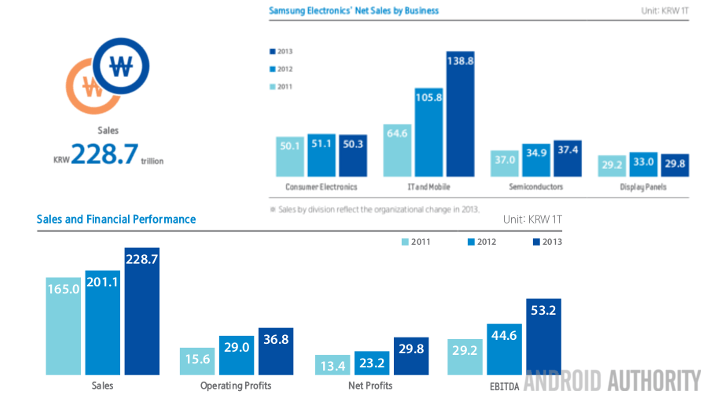
I doubt I have to tell you that Samsung did very well for themselves in 2013. Not only did their smartphone business boom, as we reported to you time and again with the launch of each successful flagship device, but their overall business experienced decent growth as well. Samsung reports ten different business divisions that cover products from washing machines and digital X-rays to SSD and LED production.
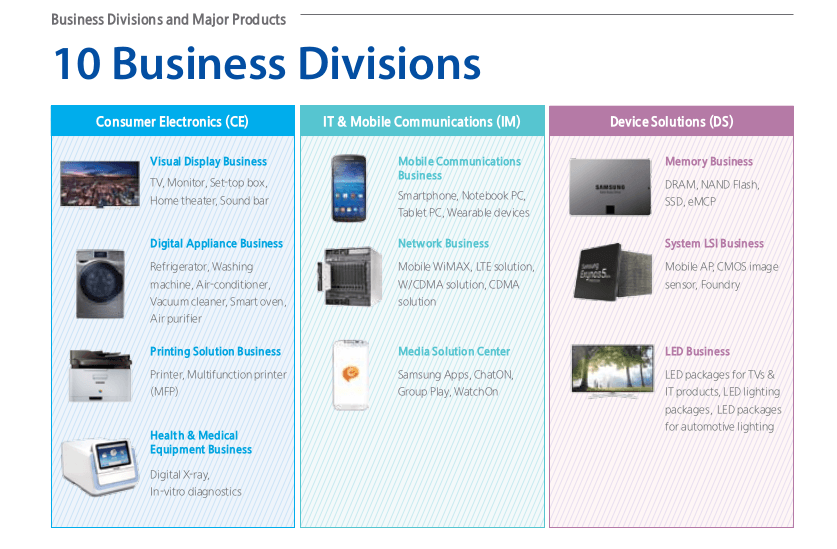
In the end, Samsung’s overall business cleaned up with KRW 228.7 trillion (Korean Won) in revenue, or about US$215 billion. That produced an operating profit of KRW 36.8 trillion (about US$34 billion.) If that does not resonate with you, perhaps you’ll appreciate the fact that this was more than double their operating profits from 2011.
[quote qtext=”Samsung held 32.3% global smartphone market share in 2013″ qperson=”” qsource=”” qposition=”right”]Looking specifically at Samsung’s mobile division, there was a 54 percent growth over 2012, bringing them to an overall 27.2% global market share for all mobile phones, and 32.3% global market share in the smartphone segment.
More recently, we’ve reported that Samsung is not doing as amazing as they’d originally forecasted for 2014, but we’ll talk about that this time next year.
What does Samsung do with all that money?
Let us overlook all of the taxes and operational fees and licenses that Samsung doles out on a yearly basis, from there, Samsung invests a large portion of their money into R&D, training/staffing and the environment.
R&D
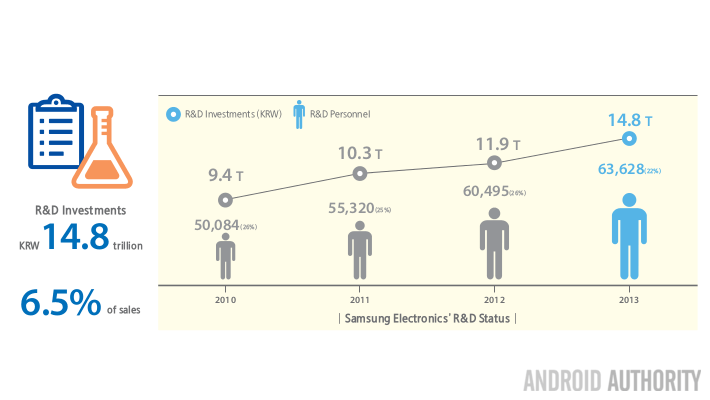
In an effort to continuously bring creative and innovative products to market, Samsung invested 6.5% of their 2013 sales into R&D. This KRW 14.8 trillion makes for a three year total of KRW 37 trillion into R&D, which we can thank for innovations like the curved display on the new Galaxy Note Edge.
Training and staffing
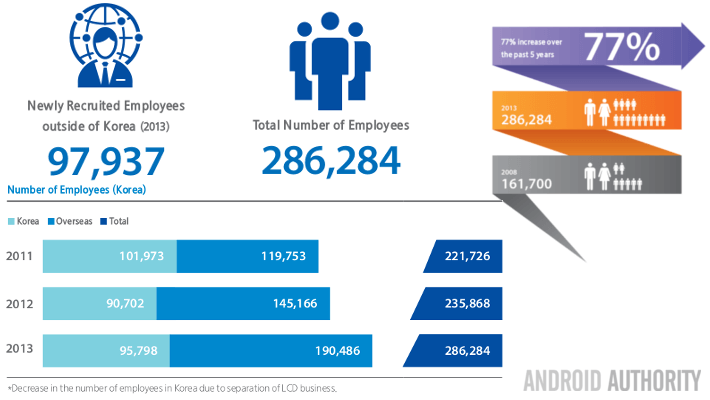
As Samsung continues to grow as a company, it has been taking efforts to help its people grow as well. I do not only speak of quantity, which measured just over 97,000 new employees around the globe in 2013, for a total of 286,284 employees, but of the fact that Samsung has invested heavily into these employees.
In 2013, Samsung put much of their workforce through various training programs for various competencies, at a cost of nearly KRW 124 billion.
The approach to new hires has seen to acquiring better talent as well. Specifically, in 2011, about 40 percent of Samsung’s new hires had previous experience in the industry, that number rose slightly in 2012 to 42 percent, but jumped to 49 percent of new hires in 2013.
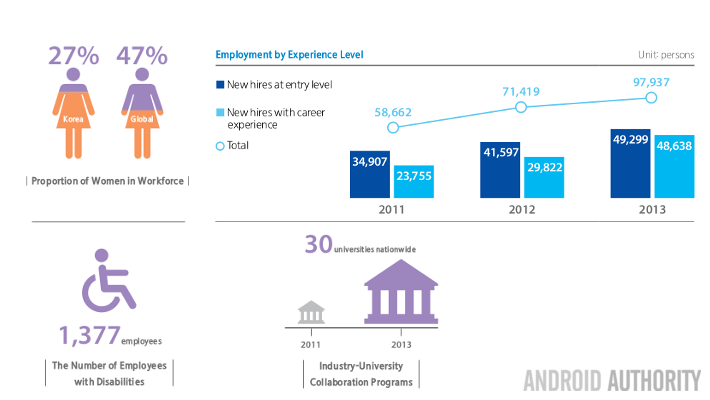
In addition, Samsung has been taking an active approach to women in the workforce. Up a percentage point and a half over 2012, nearly 4 percent of Samsung’s executive staff is now women, this adds to the overall 40 percent, or just over 94,000 women employed by Samsung around the globe.
Samsung has also shown commitment to the communities they live in, investing KRW 536.3 billion into their Corporate Social Responsibilities programs. Including work in the education and medical sectors, the employees stepped up as well, with a reported average of 11.5 hours per employee of volunteer work in 2013.
The Environment
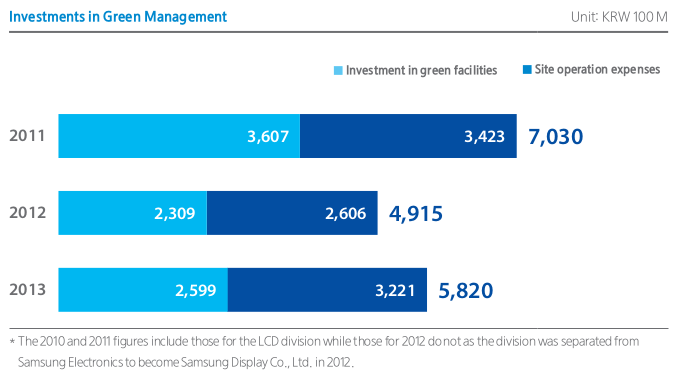
Keeping mother earth clean and happy is major undertaking for a large corporation, especially one so focused on manufacturing. On the surface, Samsung is very proud of their efforts. Not only have they streamlined their own operations to be more energy efficient, use less water and send more to recycling instead of the trash, but they’ve modified their products to be more eco-friendly as well.
[quote qtext=”1.2 million bio-plastic or recycled parts used to build and package products” qperson=”” qsource=”” qposition=”right”]You may have noticed that the packaging for your Samsung Galaxy S4, specifically, was made of 100% recycled materials. This is but one example of the near 1.2 million bio-plastic or recycled parts that Samsung uses to build and package their products.
When you get home and start using your new Samsung devices, be happy knowing that the same innovation that makes your new device lighter and perform better is the result of the use of fewer environmentally destructive parts and with better efficiency and power consumption, which again has a positive impact on our planet.
The rest

Samsung doesn’t stop there, they have an interesting whistleblower program, in which they cultivate a culture of accountability for all of their staff. Over 1500 anonymous complaints have been filed against Samsung employees for unethical conduct in the last three years. These reports were submitted by consumers and nearly 40 percent by other staff members. Corruption Prevention Training has been taken by 294,835 employees, building a culture of trust and transparency.
Samsung also launched in 2013 what they call the Mutual Growth Academy, which provides training to the employees of their parts suppliers. The premise is simple, if they can build better parts, Samsung can build better products.
I feel as though I’ve only scratched the surface of Samsung’s report, I invite you to head over and check it out for yourself. It is a pdf document that can be downloaded from the Samsung Tomorrow website.
Does a company’s culture, environmental efforts and involvement in the community influence your smartphone purchasing decisions?